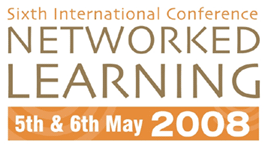

Adaptivity and adaptation: which complementarities in a learning personalization process?
D. Verpoorten, L. Petit, J.-L. Castaigne, D. Leclercq
Support Laboratory for Telematic Learning (IFRES), University of Liège, Belgium, dominique.verpoorten@ulg.ac.be, laurent.petit@ulg.ac.be, Jean- Loup.Castaigne@ulg.ac.be, d.leclercq@ulg.ac.be
Abstract
Within the iClass (Integrated Project n° 507922) and Elektra (Strep
n°027986) European projects, the authors were requested to harness
their pedagogical knowledge to the production of educational adaptive
systems. The paper pinpoints and documents difficulties and limitations
of this work as well as the possible fertility of such kind of interdisciplinary
joint research. Identification of such pitfalls is a prerequisite for
better interdisciplinary approaches in Technology Enhanced Learning (TEL)
and safer design of usable and useful e-learning tools.
In both projects, it was assumed that e-learning technologies have a major
role to play in providing such a personalised experience, the definition
of personalized learning paths can possibly be left to three agents: the
teacher, the learner and the machine. In this latest case, proponents
of adaptive systems come usually from the technical side, they require
from pedagogues that they provide rules deemed to inform this initial
modelling and all aspects of the adaptive process so that the adaptation
engine can determine the next step for the learning process. Unfortunately,
in most cases, a systematic and automatic application of pedagogical principles
turns to be disappointing, and even dangerous.
For the authors, the pedagogical added-value of adaptive tools is more
likely to be found in the support of human decision-making regarding autonomy
development and metacognitive training than in the provision of highly-technical
automatic customization devices. The paper documents four reasons underpinning
this position:
1. Pedagogy remains an unstructured field of problems
Those problems are characterized by an unlimited number of facts, features,
and situations that produce a huge number of combinations and interactions,
the effects and interplay of which on learners’ achievement and
motivation is not clearly known. It means that adaptive systems are rarely
self-sufficient and that the major challenge lays in their articulation
with non adaptive components of the learning process. Forced to this acknowledgment,
the iClass project decided finally to bend its initial automatic adaptive
credo and accept that user's decision would compensate what the system
could not thoughtfully decide by itself.
2. Rule's transparency as a condition of acceptance
The difficulty of creating automatic adaptive systems may not be the only
reason that such systems are not found in every classroom. Legitimate
resistance by teachers might be another one, underrated by adaptive systems
proponents. If any teacher is to accept devolution of her teaching responsibility
to a machine, she will be willing to understand how that individualisation
occurs in order to accept it.
3. Pedagogical return on technological investment
Producing an hour of instructional material dedicated to an Intelligent
Tutoring System is estimated to take between 300 and 1000 hours. As for
the return on investment, namely an educational benefit resulting from
personalization of learning obtained through adaptive systems, the question
stays open.
4. The behaviourist tropism of the adaptive systems we experienced
On iClass and Elektra, LabSET worked on adaptive tools based on Knowledge
Space Theory (Doignon & Falmagne, 1999), namely a skills-based cognitive
engineering. From a pedagogical viewpoint, it confirmed that such systems
are closely linked to a behaviouristic paradigm, limited in their scope
and obviously premature to cater for the educational needs in respect
to full blown personal learning.
Finally, the paper discusses the spectrum defined by two radical views on personalization: the "Summerhill personalization" (the student decides for everything) and the "Robocop personalization" (the student decides for nothing). It advocates for more development and research taking place in the median part of the spectrum, in the zone wherein adaptivity can support autonomy development.
| About NLC |
2008 Conference Papers
| Conference Committee| Keynote
Speakers
| Papers from previous NL conferences |Research Seminars| Current Conference
| Sponsors | Contact
|
